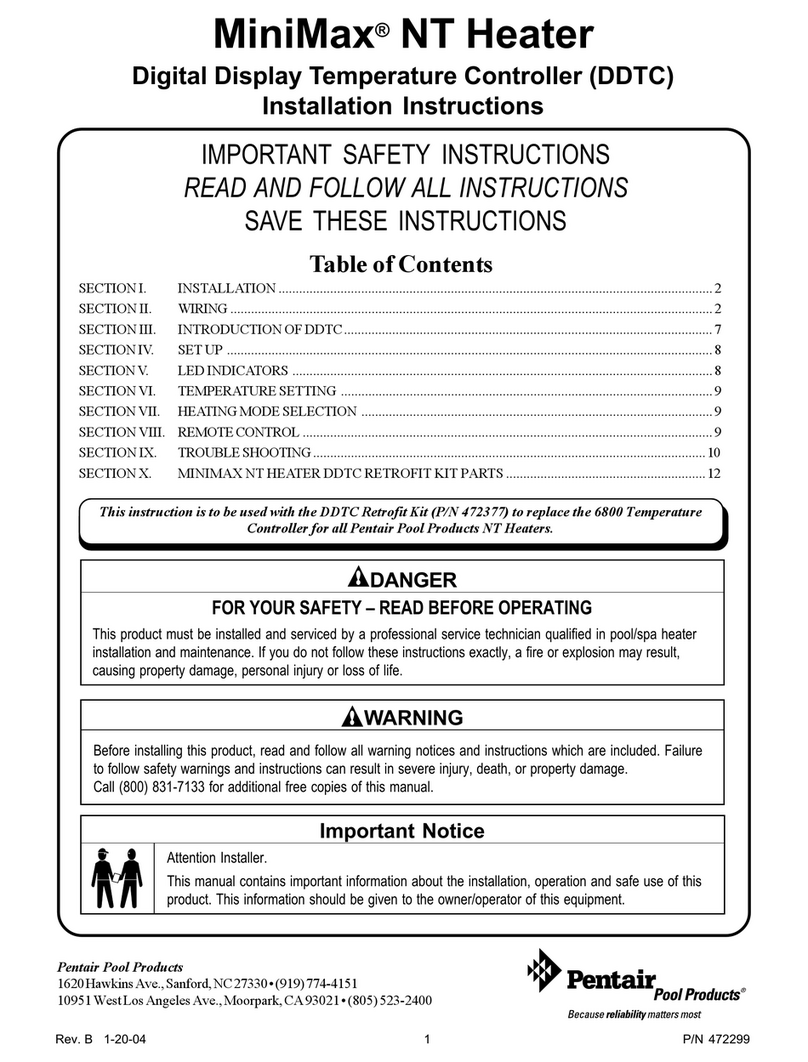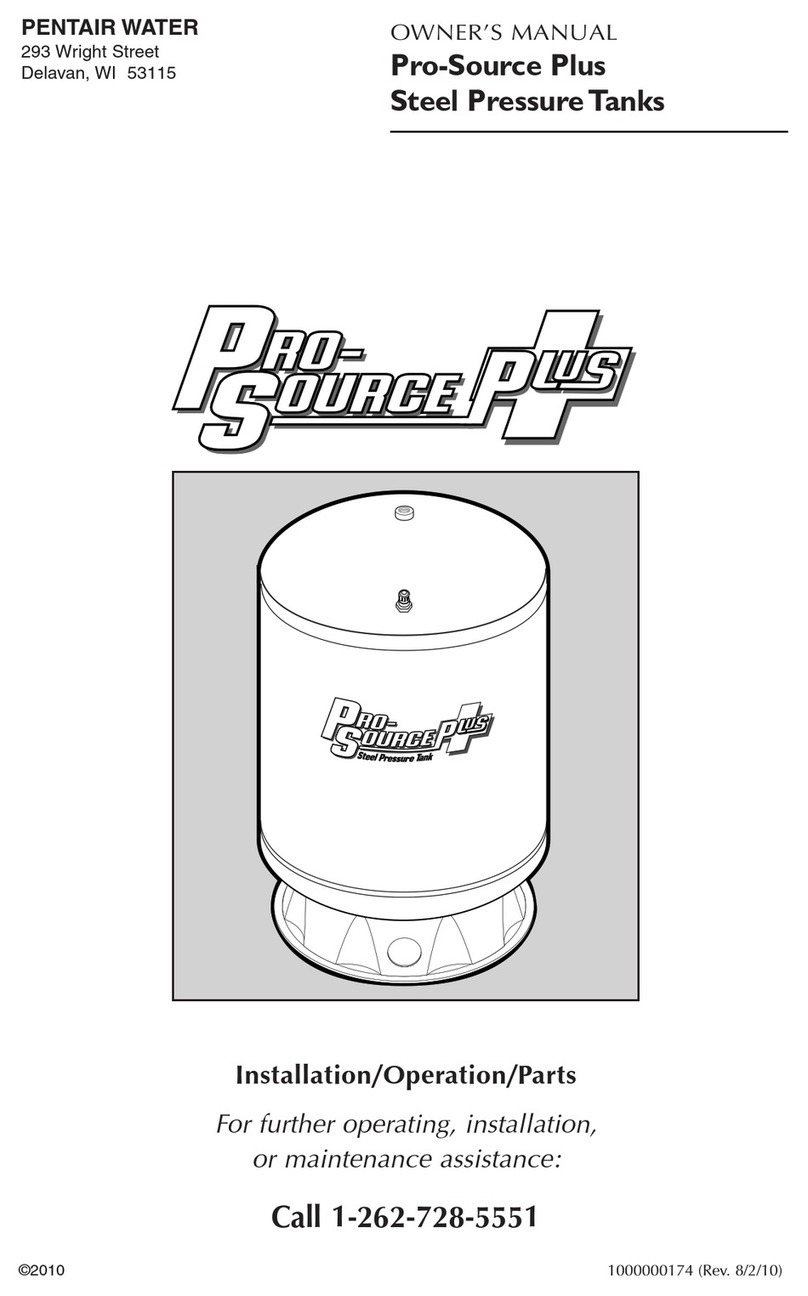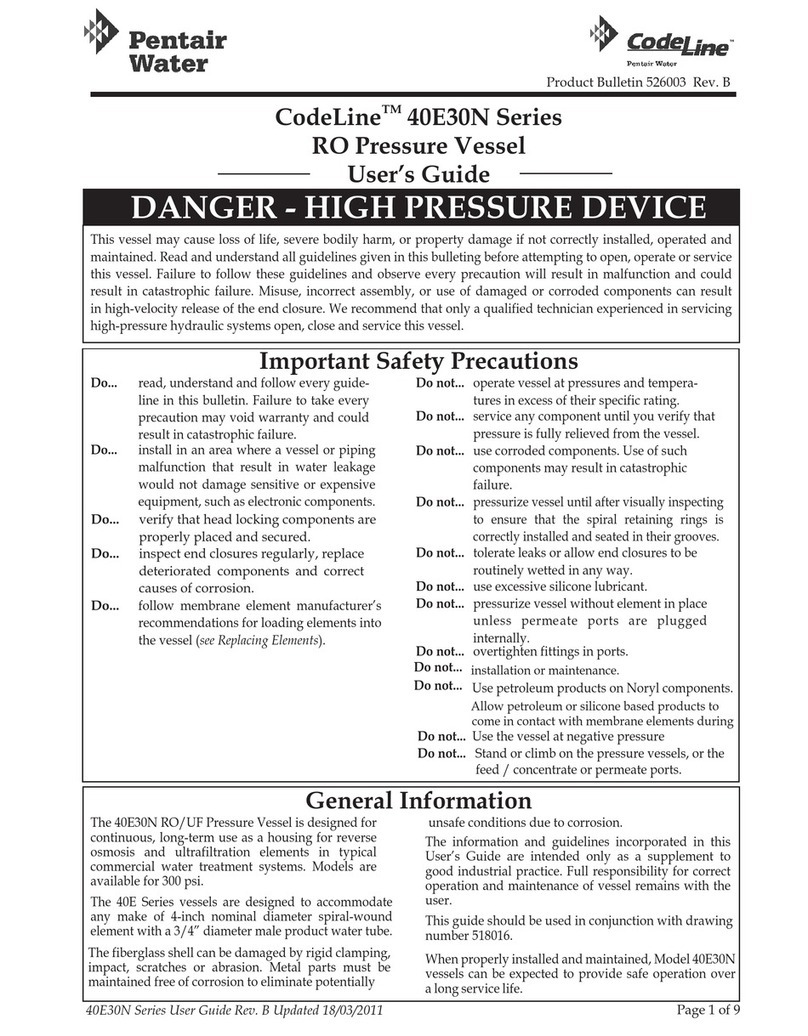
P/N 472128 Rev. F 08-20-10
8
Operation (contd.)
FOR YOUR SAFETY: READ BEFORE LIGHTING
A. This heater is equipped with a pilot which must be
lighted manually. When lighting the pilot, follow
these instructions exactly.
B. BEFORE LIGHTING smell all around the heater
area for gas. Be sure to smell next to the floor because
some gas is heavier than air and will settle on the
floor.
WHAT TO DO IF YOU SMELL GAS
- Do not try to light any heater.
- Do not touch any electrical switch; do not use any
phone in your building.
- Immediately call your gas supplier from a neighbor's
phone. Follow the gas supplier's instructions.
- If you cannot reach your gas supplier, call the Fire
Department.
C. Use only your hand to push in or turn the gas control
knob. Never use tools. If the knob will not push in or
turn by hand, don't try to repair it. Call a qualified
service technician. Forced or attempted repair may
result in a fire or explosion.
D. Do not use this heater if any part has been under water.
Immediately call a qualified service technician to
inspect the heater and to replace any part of the control
system and any gas control which has been under water.
MINIMAX®CH MILLIVOLT LIGHTING/OPERATION-NATURAL GAS & PROPANE
1. STOP! Read the safety information above.
2. Set the thermostat to the lowest setting.
3. Turn off electric power to the heater.
4. Push in gas control knob slightly and turn clock-
wise to “OFF”.
Gas control knobs shown in “OFF” position.
NOTE
Knob cannot be turned from “Pilot to “OFF”” unless
knob is pushed in slightly. DO NOT FORCE.
5. Wait five (5) minutes to clear out any gas. If you then
smell gas, STOP! Follow "B" in the safety informa-
tion above. If you don't smell gas, go to the next step.
6. Push in gas control knob slightly and turn
counterclockwise to “Pilot”.
If you do not follow these instructions exactly, a fire or explosion may result causing personal injury, loss of life
and property damage.
Since propane gas is heavier than air, escaping propane will accumulate and remain at ground level. Do not
attempt to light the heater. If you suspect a propane leak, lighting the heater can result in a fire or explosion
which can cause personal injury, death, and property damage.
WARNING
7. Push the control knob all the way and hold in.
Immediately light the pilot with Presslite
matchless ignition system by pressing the red
igniter button (located at the panel next to the gas
valve). Continue to hold the control knob in for
about one (1) minute after the pilot is lit. Release
knob and it will pop back up. Pilot should remain
lit. If it goes out, repeat steps 4 through 7.
• If knob does not pop up when released, stop and
immediately call your service technician or gas
supplier.
• If the pilot will not stay lit
after several tries, turn the
gas control knob to “OFF”
and call your service
technician or gas supplier.
8. Turn knob on gas control
counterclockwise to
“ON”.
9. Replace the control access
door.
10. Set the thermostat to the
desired setting.
LIGHTING INSTRUCTIONS
TO TURN OFF GAS TO HEATER
1. Set the thermostat to lowest setting.
2. Turn off all electric power to the heater if service is
to be performed.
3. Remove control access door.
4. Push in gas control knob slightly and turn clockwise
to "OFF". Do not force.
5. Replace control access door.
Robertshaw Millivolt Gas Valve Honeywell Millivolt Gas Valve
Figure 1. Figure 2.
Figure 3.
Figure 4. Pilot






























